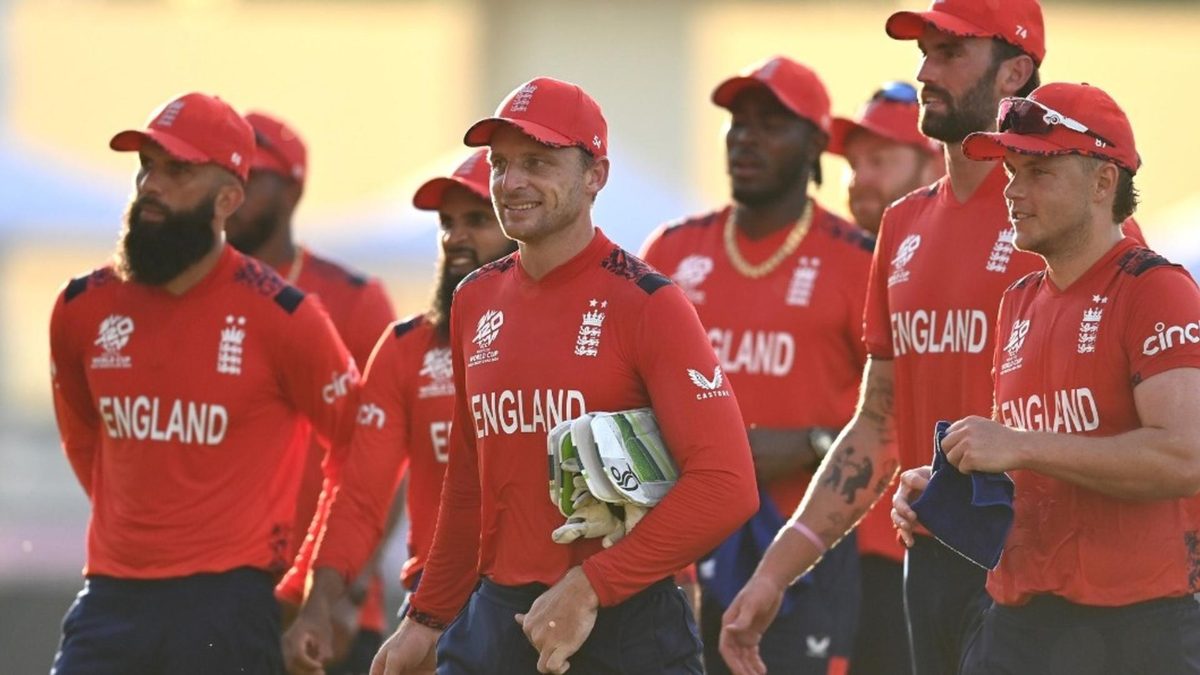
To win the race you have to be in the race. And England, somehow, are still in the race.
Jos Buttler's side made sure they stayed in contention for a place in the knockouts at least with big wins over Oman and Namibia. Following the loss to Australia, the only option they had l was to give it large in defeating the two weakest sides in their group. While minnow-bashing should be regarded as a bare minimum for the defending champions, they still went out and did it. Scotland pushed Australia close, but came up short. Catastrophe has been avoided. But amid all the weather watching and net run rate calculating, less discussed has been a key question going forward: Are England actually any good?
England were poor against Scotland. In the ten overs of play managed, they looked sloppy and undercooked and, to an extent, that’s because they were. Chris Jordan came back into the international side having not played a T20I since September before the Pakistan series, and most were still coming down from the IPL, with only two non-rained off matches in between. Getting whacked by George Munsey and Michael Jones brought out the deficiency of their 'alright on the night' approach. Equally, Scotland have undoubtedly closed the gap to their full member oppositions: how close they ran Australia is a case in point. Ten overs in which the Scots outplay you is no damning indictment.
Despite running Australia close in St Lucia, Scotland have been knocked out of the T20 World Cup with England securing the second spot in Group B after beating Namibia in Antigua.
— Wisden (@WisdenCricket) June 16, 2024
REPORT: https://t.co/PyDKyrhjT3#T20WorldCup2024 pic.twitter.com/9hZjzuL429
Defeat to Australia was comfortable, but England's missteps largely came early in the game. Will Jacks taking the second over to Travis Head and David Warner was a clear error in hindsight, a tactical punt to break open a lethal opening partnership, or at least sneak in a cheap over, gone wrong. Equally, following up with Mark Wood, allowing Warner to target the short leg-side boundary was another mistake. Once those 55 runs were conceded off the first four overs, England were chasing the game. Arguably, they largely matched Australia through the rest of the game, but the damage had been done.
At this point, the knives were being sharpened and the Buttler-Mott obits were being penned. Then the rain clouds cleared, England found some form, and now they are back in the mix.
Those tactical errors can be presented as isolated incidents to learn from. England’s bowling attack still looks to have the lethality promised before the tournament with its seamers fit and Adil Rashid now the No.1 ranked T20I bowler in the world. Bouncing out associate batters with 90 mph rockets is not irrefutable evidence of a fearsome bowling attack, but England’s premier quicks have been pretty on the money since the opening powerplay against Australia. Bowling Oman out for 47 and restricting Namibia to what they did was better than any other team in the group managed. Also, England will play their most difficult Super Eight matches in St Lucia, which is reportedly likely to be high scoring. Having Jofra Archer, who has barely put a foot wrong since returning from his latest lay-off, on that pitch should only work in England's favour.
The batting is more complicated. Although their balance looked better against Namibia, with Jonny Bairstow and Harry Brook batting in more natural positions, there’s still the lack of an out-and-out finisher and the left-hander problem. Liam Livingstone and Moeen at five and six leaves little room for a fallback, as was seen in the Australia game. And packing the side with all-rounders and top-order options, while elongating the batting order, can leave the middle order short on substance. Sam Curran came in against Namibia and gave an extra option at the death but the potential. England have to work out whether Jacks' ability to go big at the top of the order outweighs Curran’s worth in the middle, and possible contribution with the ball as the fourth seamer.
With all that being said, England probably sit about where they were reckoned to be ahead of the tournament among the teams which have made the Super Eights - somewhere in the middle. Of the Group One teams Australia have looked clinical so far, and India haven’t been far off. In Group Two, South Africa’s ridiculous middle order and top-tier fast-bowling attack look the pick of the lot, despite their falter against Nepal, while the West Indies on home soil could pose a significant challenge. England fit somewhere in the Afghanistan bracket, above the USA and Bangladesh, but likely fighting for the second qualifying place in the group.
If England are to secure a semi-final spot, it’s pretty much essential that they beat at least one of South Africa or West Indies. One loss will leave them dependent on either net run rate or results elsewhere, but equally, two wins could be enough.
Regardless of potential scenarios, England aren’t the dominating force they were 18 months ago. It's a team in partial transition, a little unsure of itself, but still with enough weapons to make the rest wary. T20 is a format in which any team can beat another on their day. And the T20 World Cup's format only requires a few good days to take home the crown. How good are England? It’s time to find out.
Follow Wisden for all T20 World Cup updates, including live scores, match stats, quizzes and more. Stay up to date with the latest cricket news, player updates, team standings and match highlights.








